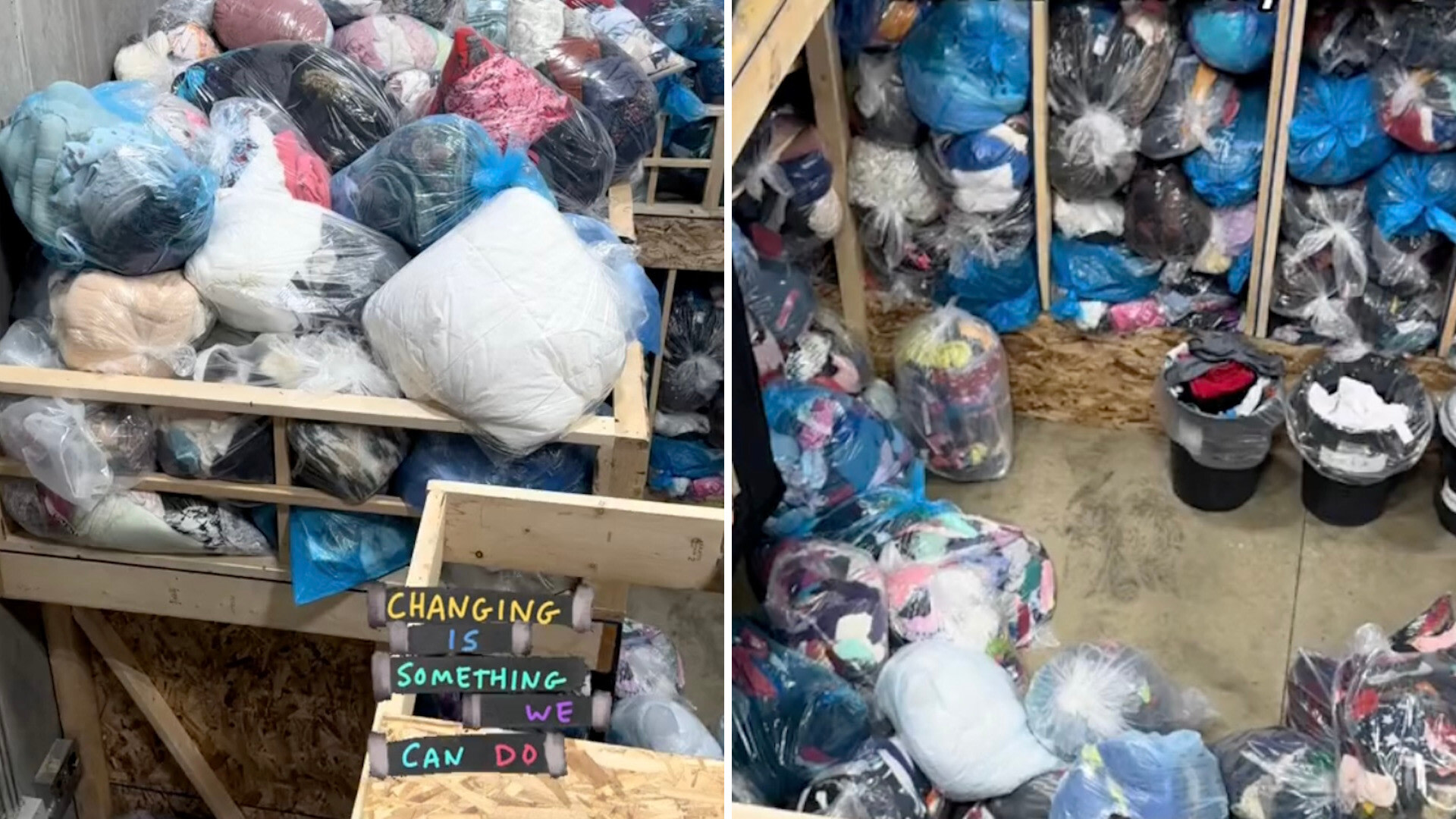A unique look behind the scenes at a thrift store in Canada has shed light on the slightly depressing reality of secondhand shopping.
What’s In Store Fort McMurray (@whatsinstoreymm), a thrift store in Alberta, Canada, posted a video on TikTok showing the store’s back room crammed with bags upon bags of clothing. While this may seem like an ideal scenario for a thrift store, as they have plenty of merchandise to fill the racks, it does show just how deep our addiction to fashion is.
“We all need to open our eyes and do something about fast fashion,” the store wrote under a video of the situation. “We need to stop buying fast fashion.”
@whatsinstoreymm 🌍🛍️ The importance of thrift stores and community donations! 🛍️🌍 #SustainableLiving #ThriftStoreFinds #ReduceReuseRecycle We all need to open our eyes and do something about #fastfashion. We need to #stopbuying. We see this on #Netflix and feel distanced but this is our own community, a small town in #Alberta #Canada. We’ve only been here 2 years and these are sorted donations ready to come into the store and be placed on the ground. Where did this end up before us? The landfill! We may get free donations but we also have to hire staff to go through the actual trash we get. We hire in our local communities and willingly donate when asked in times of crisis but also to organizations that need these things. We also offer a great sports and charity volunteer opportunity in Fort McMurray: you volunteer 250 hours sorting these donations and we’ll pay your organization $5,000! This is no small thing, we want to make a difference in our communities and we also want to show our communities the huge impact that fast fashion and excess has on our future #shoplocalcanada #shopwithintention I want you to talk about the incredible impact that community thrift stores and donations have on our planet. 🌎💚 Community thrift stores play a critical role in promoting sustainable living and reducing our carbon footprint. These stores accept donations of gently used items, giving them a second life and preventing them from ending up in landfills. ♻️🙌 Not only does this help reduce waste, but it also contributes to the circular economy, where items are reused and repurposed instead of thrown away. By shopping at thrift stores, we can contribute to a more sustainable future. When we buy secondhand items, we reduce the demand for new production, which in turn reduces the use of natural resources and emissions created during manufacturing. 💪🌿 Plus, thrift stores often offer unique and one-of-a-kind finds that can add personality and style to our closets and homes! But that’s not all! Community thrift stores also play a crucial role in supporting local communities. Many thrift stores are run by nonprofit organizations, and proceeds from sales are often used to fund community programs and services. This means that every purchase we make at a thrift store supports important causes and improves the lives of others. 💕🤝 So let’s do our part to support community thrift stores and donations! Start by decluttering your closets and donating things you no longer need. Remember, one person’s trash can be another person’s treasure! 🧺✨ And if you need something new, stop by your local thrift store before you buy anything new. Together we can make a positive impact on our planet and our communities. 🌍🌟 #ThriftStoreLove #ShopSustainably #GiveBack #CommunityImpact #SustainableFashion #SecondHandFirst #DonateAndMakeADifference ♬ Way Down We Go – Kaleo
In fact, the idea of fast fashion is to get us to buy more clothes. Items are produced quickly and cheaply to keep up with the latest trends, and once one item is sold out of the shelves, the next trend will soon take their place.
The rate of production is a huge drain on resources, as it takes a lot of water and energy to create fabrics and then turn them into garments. According to Earth.org, it takes about 700 gallons of water to make a cotton T-shirt, while a single pair of jeans requires 2,000 gallons.
Fast fashion also uses cheap plastic fibers in many items, which can release microplastics that end up in water sources after washing. Microplastics have been found in almost every major organ in the human body and are linked to cancer, respiratory disease, mental decline, and fertility and pregnancy problems.
It’s lucky if clothes from fast-fashion outlets find their way into secondhand shops at all, because many garments are made with planned obsolescence in mind – or intentionally made to break or fall apart within a short period of time. When they start to break down, these garments are likely to end up in landfills, where they contribute to the production of the climate-damaging gas methane.
Earth.org found that of the 100 billion items of clothing produced worldwide each year, 101 million tons end up in landfills.
What’s In Store wrote about secondhand shops: “Not only does this help reduce waste, but it also contributes to the circular economy, where items are reused and repurposed rather than thrown away. By shopping at secondhand shops, we can contribute to a more sustainable future.”
Commenters were surprised at how many items of clothing the store had in stock.
“Seeing this issue presented in this way really hit me,” said one user.
“There’s probably a lot of good vintage items in there if it’s all donated clothing,” added another.
Subscribe to our free newsletter for good news And useful tipsand don’t miss this cool list of simple ways you can help yourself and the planet at the same time.

